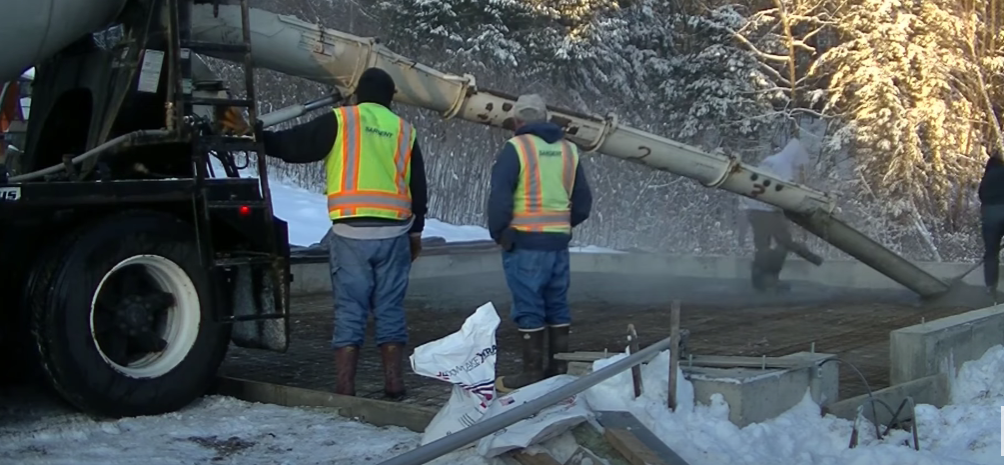Can concrete be installed in winter?

Yes, you can place concrete in winter, but extra precautions are necessary to ensure it cures correctly and achieves its full strength. Cold temperatures slow down the hydration process—the chemical reaction between cement and water—and may cause the water in the mix to freeze before the concrete sets properly. Here are some key considerations and best practices for placing concrete in cold weather:
- Temperature Management
Ideal Placement Conditions: Concrete should ideally be placed when the ambient temperature is above 40°F (4°C).
If temperatures are expected to fall below this range, protective measures must be taken.
2. Precautions for Winter Concrete Installation
- Use Heated Materials: Warm water and heated aggregates can be used to keep the mix temperature above freezing.
- Low-Temperature Admixtures: Additives like accelerators (e.g., calcium chloride) can speed up the curing process.
- Insulating Blankets and Covers: Insulation, such as blankets or plastic sheeting, helps maintain the heat generated during hydration.
- Avoid Frozen Ground: Concrete should not be poured over frozen soil, ice, or snow as this can lead to poor bonding and settlement issues.
- Wind Protection: Cold winds can cool the surface of fresh concrete quickly, so wind barriers or enclosures may be needed.
- Temporary Heating: Heaters (e.g., propane, kerosene) can be used to maintain proper curing temperatures, but avoid direct heat, as it may dry out the concrete unevenly.
3. Curing Considerations
- Concrete must be kept above 50°F (10°C) during the initial 24-48 hours for proper curing.
- If concrete freezes during curing, it can lose significant strength.
- Insulate the concrete with curing blankets or straw and plastic to trap heat during the hydration process.
4. Cold-Weather Mix Designs
- Consider using high-early-strength cement or admixtures designed for cold-weather concreting.
- These help the concrete set faster and reduce its exposure to freezing temperatures.
5. Testing and Monitoring
- Use a thermometer to monitor the concrete’s temperature regularly.
- Ensure proper curing times are adhered to before removing any covers or heat sources.
Conclusion
Installing concrete in winter is possible with careful preparation and temperature management. By following cold-weather concreting best practices, you can achieve strong, durable results even in suboptimal conditions.
LET'S WORK TOGETHER!
Choosing Stevens Point Concrete Experts means choosing a team dedicated to delivering exceptional craftsmanship and superior results. We offer comprehensive concrete solutions, including precise lifting, durable coatings, and stunning decorative finishes, all designed to improve your property's functionality and aesthetic appeal. Our commitment to advanced techniques and high-quality materials ensures that every project meets your highest standards. With a focus on attention to detail and customer satisfaction, we guarantee a smooth, professional experience. Contact us today for reliable service and impressive outcomes. Trust Stevens Point Concrete Experts to bring your vision to life with unparalleled quality and expertise.
QUICK LINKS
COMPANY INFO